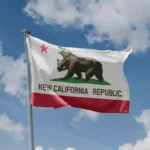Introduction
Big Cat Twitter, a vibrant and growing community on the social media platform Twitter, celebrates the majesty and mystery of the world’s largest felines. From tigers and lions to leopards and cheetahs, these magnificent creatures capture the imaginations of millions worldwide. This article explores the phenomenon of Big Cat Twitter, its origins, key influencers, the role it plays in wildlife conservation, and its impact on public awareness and education.
Origins and Evolution
The Rise of Big Cat Twitter
The origins of Big Cat Twitter can be traced back to the broader rise of niche communities on social media. As Twitter grew in popularity, users began to form communities around specific interests, including wildlife and conservation. Enthusiasts, conservationists, zoos, and wildlife organizations created accounts dedicated to sharing information, photos, videos, and stories about big cats.
Growth and Development
Over time, the community expanded, drawing in people from diverse backgrounds united by their fascination with big cats. Hashtags like #BigCatTwitter, #TigerTuesday, and #Caturday became popular, allowing users to easily find and contribute content. Influential accounts and viral posts helped propel Big Cat Twitter into the mainstream, attracting attention from media outlets and celebrities.
Key Influencers and Notable Accounts
Conservation Organizations
Several wildlife conservation organizations have established a strong presence on Big Cat Twitter. These groups use the platform to raise awareness about the plight of big cats in the wild, promote conservation efforts, and solicit donations. Notable organizations include Panthera, the World Wildlife Fund (WWF), and the Wildlife Conservation Society (WCS).
Zoos and Wildlife Sanctuaries
Zoos and wildlife sanctuaries also play a significant role in the Big Cat Twitter community. They share updates about their resident big cats, educational content, and behind-the-scenes glimpses of their facilities. Popular accounts include those of the San Diego Zoo, the Bronx Zoo, and Big Cat Rescue.
Individual Enthusiasts and Photographers
Individual enthusiasts and wildlife photographers contribute a wealth of stunning imagery and engaging stories. These influencers often have extensive knowledge of big cats and share insights about their behavior, habitats, and conservation status. Prominent photographers like Steve Winter and Nick Nichols frequently showcase their work on Twitter, captivating audiences with breathtaking photos.
The Role of Big Cat Twitter in Wildlife Conservation
Raising Awareness
One of the most significant contributions of Big Cat Twitter is its role in raising awareness about the threats facing big cats. Habitat loss, poaching, and human-wildlife conflict pose severe risks to these animals. By sharing information and personal stories, the community educates the public about these issues and the importance of conservation efforts.
Fundraising and Support
Big Cat Twitter also serves as a platform for fundraising and support. Conservation organizations and sanctuaries often run campaigns to raise money for their initiatives, such as anti-poaching efforts, habitat restoration, and captive breeding programs. The community’s passionate members frequently participate in and promote these campaigns, helping to generate significant financial support.
Advocacy and Policy Change
The community’s collective voice can also influence policy change. By mobilizing followers and amplifying messages, Big Cat Twitter can draw attention to critical legislative issues. For example, campaigns to ban trophy hunting or to implement stricter penalties for poaching can gain momentum through widespread social media support.
Impact on Public Awareness and Education
Engaging Content
Big Cat Twitter excels at creating engaging content that educates and entertains. High-quality photos and videos, fascinating facts, and compelling stories capture the attention of users and encourage them to learn more about big cats. This content often goes viral, reaching a broader audience and sparking interest in wildlife conservation.
Interactive Learning
The interactive nature of Twitter allows users to engage directly with experts, organizations, and fellow enthusiasts. This interaction fosters a deeper understanding of big cats and the challenges they face. Live Q&A sessions, virtual tours, and educational threads are just a few ways the community facilitates learning and engagement.
Inspiring Action
By highlighting success stories and showcasing the impact of conservation efforts, Big Cat Twitter inspires action. Whether it’s adopting sustainable practices, donating to conservation organizations, or volunteering time and resources, the community motivates individuals to make a difference.
Challenges and Controversies
Misinformation and Exploitation
Like any online community, Big Cat Twitter faces challenges related to misinformation and exploitation. Misleading posts or sensationalized content can spread quickly, creating confusion and undermining legitimate conservation efforts. Additionally, some accounts may exploit big cats for profit, sharing unethical content or promoting harmful activities.
Ethical Concerns
There are also ethical concerns surrounding the portrayal of big cats. Some argue that the focus on captivating imagery and stories can inadvertently prioritize entertainment over education and conservation. Ensuring that content is responsible, respectful, and accurately represents the reality of big cats is essential.
Balancing Engagement and Education
Striking a balance between engaging content and educational value can be challenging. While eye-catching photos and videos draw viewers in, it is crucial to provide meaningful information that enhances understanding and promotes conservation. This balance is vital for maintaining the community’s credibility and impact.
Future Prospects
Technological Advancements
As technology continues to evolve, Big Cat Twitter is likely to benefit from new tools and platforms. Enhanced multimedia capabilities, virtual reality experiences, and augmented reality applications could provide even more immersive and educational content. These advancements can help deepen users’ connection to big cats and their conservation.
Expanding Reach
The community’s reach is expected to grow as more people join social media and discover Big Cat Twitter. Collaborations with other niche communities, influencers, and mainstream media can further amplify its message. Expanding the audience increases the potential for positive impact on conservation efforts.
Continued Advocacy
Big Cat Twitter’s role in advocacy is likely to strengthen over time. As more people become aware of the challenges facing big cats, the community can drive greater support for policy changes and conservation initiatives. This collective action has the potential to bring about significant, long-lasting improvements in the protection and preservation of big cats.
Conclusion
Big Cat Twitter represents a unique and powerful convergence of social media, wildlife conservation, and public engagement. By celebrating the beauty and importance of big cats, the community raises awareness, educates the public, and supports crucial conservation efforts. Despite challenges and ethical considerations, the impact of Big Cat Twitter is undeniable. As it continues to grow and evolve, it will remain a vital force in the fight to protect these magnificent creatures and ensure their survival for generations to come.







